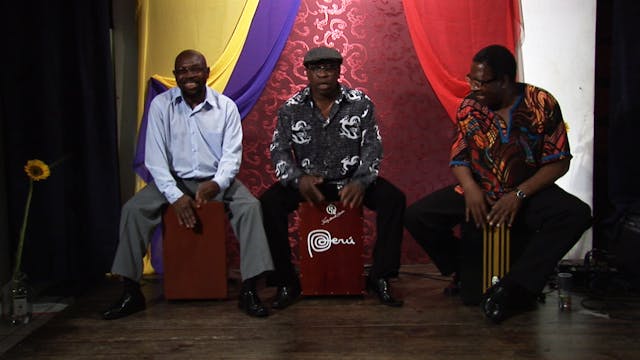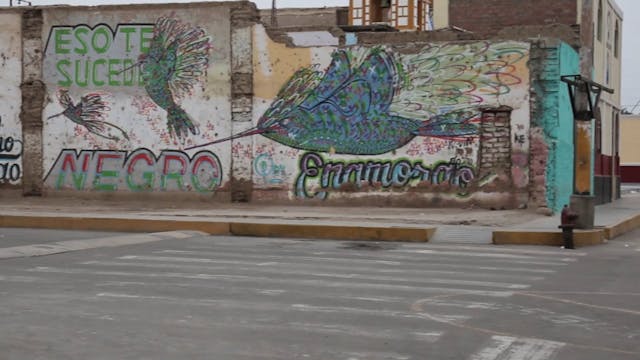Lalo Izquierdo Explains Afro-Peruvian Talking Drums
Masters of Rhythm-EDU-FULL PACKET
•
4m 31s
As we saw in the full documentary, the cajón was used as a means of communication in the days of slavery between the communities of escaped slaves and their brothers and sisters who had not been able to escape. This mirrors the "talking drums" found in many regions of Africa.
Izquierdo explained the meaning of two of the rhythms in the documentary. Here, we have included everything that he told me about the topic. First we get a repeat of what we saw and heard in the documentary and then he continues on, demonstrating and explaining two other rhythms.
The communities of escaped slaves were called "palenques:' the escaped slaves referred to each other as "cimarrones." The palenques were often located in the jungle, and often were in contact with indigenous peoples as well.
Up Next in Masters of Rhythm-EDU-FULL PACKET
-
Masters of Rhythm: the Afro-Peruvian...
"...an intimate portrait of the master practitioners of the rhythmic music central to Afro-Peruvian heritage. Highly recommended."
Video Librarian (C. Block)
"...the energy is palpable.... [W]ill leave viewers wanting to see, hear, and know more.... A fine choice."
EMRO (Edu. Me... -
Trip to el Carmen district
The el Carmen district in southern coastal Peru is known as a center of Afro-Peruvian culture. This short video gives you an idea of what it's like to go there, and what you can expect to find. From the bus trip down from Lima to graphic illustrations of the artistic vibrancy of the community, ...


